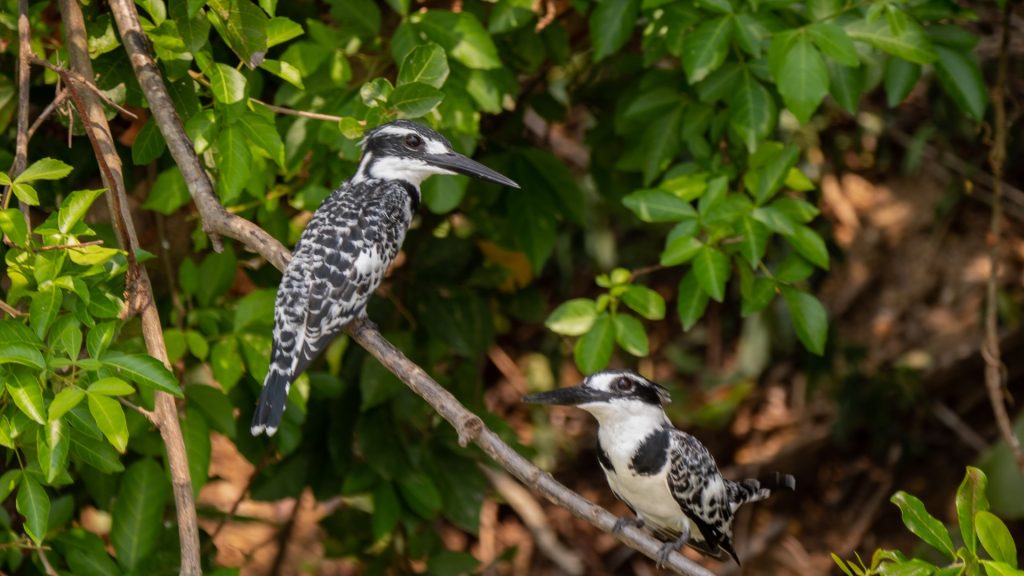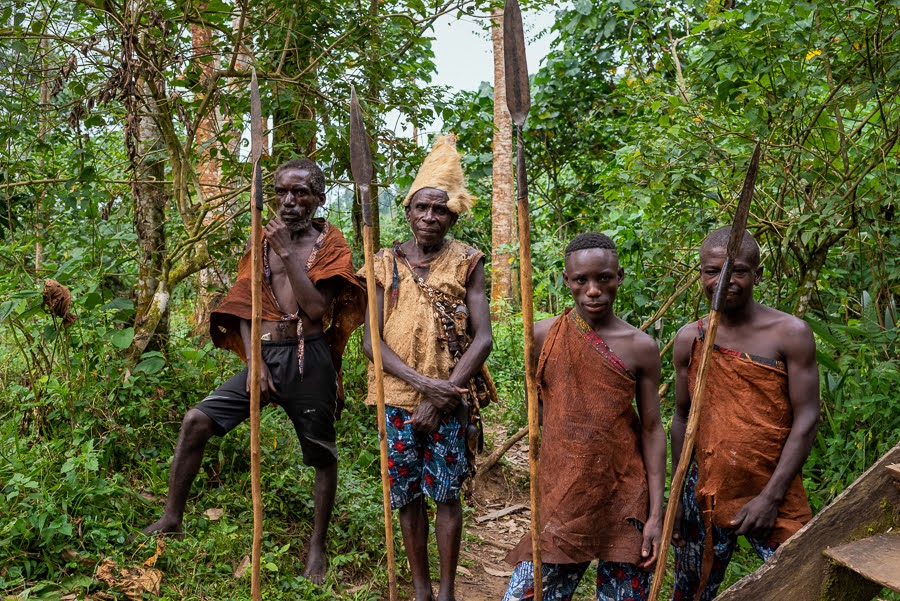Queen Elizabeth National Park is not only Uganda’s most popular safari destination, it’s also a birding wonderland. With over 600 recorded bird species, the park is one of the most diverse bird habitats on the African continent. From enormous water birds to tiny forest dwellers, there’s something here for every bird lover.
Let’s take a closer look at some standout species you’re likely to encounter, plus where and how to find them.
Top Birds to Look Out for (with Details!)
Shoebill Stork (Balaeniceps rex)
A true legend of the swamps, the Shoebill Stork is a bucket-list bird for many. With its enormous shoe-shaped bill and steel-grey plumage, it can stand motionless for hours while stalking lungfish. Often described as dinosaur-like, its piercing stare adds to its mythical presence in the wetlands near Lake Edward.
African Fish Eagle (Haliaeetus vocifer)
Nothing says “African safari” quite like the echoing cry of an African Fish Eagle. With a bold white head, chestnut body, and fierce yellow eyes, it’s a dominant presence by the water. Known for its signature dive and powerful talons, it’s often seen perched majestically in trees overlooking lakes and rivers.
Black Bee-eater (Merops gularis)
A living jewel of the forest, the Black Bee-eater dazzles with a velvet-black body, electric blue underparts, and a vivid red throat. Agile and graceful, it zips through the air snatching insect’s mid-flight, and prefers the forest edges and clearings where sunlight catches its brilliant colors.
Great Blue Turaco (Corythaeola cristata)
With a striking blue body, banana-yellow bill, and vibrant green wings tipped in red, the Great Blue Turaco looks like it flew straight out of a rainforest fairytale. These fruit-loving birds are often seen in small family groups gliding between high branches in Maramagambo Forest.
Martial Eagle (Polemaetus bellicosus)
This raptor rules the skies as Africa’s largest eagle, with a wingspan of up to 2.6 meters. It boasts dark brown feathers on its back and a spotted white underside. Fearless and powerful, it preys on everything from small antelopes to large birds, often seen soaring over Ishasha’s open plains.
African Skimmer (Rynchops flavirostris)
These sleek, black-and-white birds are a marvel in motion. With long wings and a lower beak longer than the upper, African Skimmers glide low over the water, slicing the surface for fish. Their bright orange bills and acrobatic feeding style make them a highlight of a Kazinga Channel cruise.
Verreaux’s Eagle-Owl (Bubo lacteus)
The largest owl in Africa, it has a soft grey coat, enormous round head, and pale pink eyelids its most unique feature. Mostly nocturnal, this powerful predator feeds on everything from rodents to monkeys. Spot it in tall fig trees or listen for its low gruff hoots after sunset.
Lesser Flamingo (Phoeniconaias minor)
These elegant birds are smaller and pinker than their cousins, with deep crimson legs and a black-tipped curved bill. They feed on blue-green algae in soda lakes like Lake Munyanyange, where their synchronized movements turn the shoreline into a living pink canvas during migration season.
Pied Kingfisher (Ceryle rudis)
Always busy, the Pied Kingfisher hovers like a drone before plunging beak-first into the water. Black-and-white and slightly crested, it often hunts in pairs and lets out a loud, mechanical rattle as it flies. Watch for it on reeds and over calm waters of the Kazinga Channel.
Papyrus Gonolek (Laniarius mufumbiri)
A shy but brightly colored bird, the Papyrus Gonolek wears a tuxedo of jet black and fiery red. It hides deep within papyrus reeds, making it hard to spot but its duet call, often performed by a pair in perfect harmony, is unforgettable. It’s an endemic species found only in papyrus swamps of East Africa.
Yellow-Billed Stork (Mycteria ibis)
Elegant and statuesque, this stork boasts a long yellow bill that it sweeps through water in search of fish, frogs, and insects. Its white body is accented by black wing tips and a pinkish wash during breeding season. You’ll often see them in large flocks wading through shallow channels.





